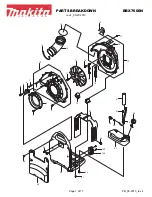
©
Agilent Technologies 1989–2002
Agilent 3070 / 79000 Site Preparation
10-90
Chapter 10: Site Preparation – Power Requirements for Older Systems: Series 3 Power Requirements and Connections (Prior to May 2000)
Connecting Power To The Testhead
The power options available for Agilent 3070 Series 3 /
79000 with E1135C PDUs are shown in
After following the lock-out, tag-out procedure,
1
have
your electrician verify the voltage selection straps and
jumpers and connect the mains power to the PDU as
shown on the indicated power installation diagram.
WARNING
✺
Hazardous voltages, capable of causing injury or
death, are present inside the PDU as long as
"mains" power is connected.
On the E1135C PDU, locking the Mains
Disconnect switch in the ’O’ position disconnects
"mains" power from the loads. However, "mains"
power remains at the input terminals of the Mains
Disconnect switch.
Disconnect "mains" power from the PDU before
working on the input side of the Mains Disconnect
switch and follow the lock-out, tag-out procedure.
Working with "mains" power must be performed
only by trained and qualified service personnel.
Holes are provided in the front, side and rear
covers for wire egress. For safety, strain relief
cable clamps (0400-0377) must be used on all
wires routed through these holes. All unused
holes must be blocked by filler plugs (6960-0177).
1
A “lock-out, tag-out procedure is used by electricians. The electrician turns the “mains” power switch off and places a hasp through the
“mains” power switch. The hasp has holes for pad-locks. A tag is placed on the lock which provides information regarding who put the
lock in place, the work being performed, when the lock was installed, when the lock will be removed, and the electrician’s supervisor.
Only the electrician who installed the lock or the electrician’s supervisor (under certain circumstances) may remove the lock and turn the
“mains” power switch on.
















































